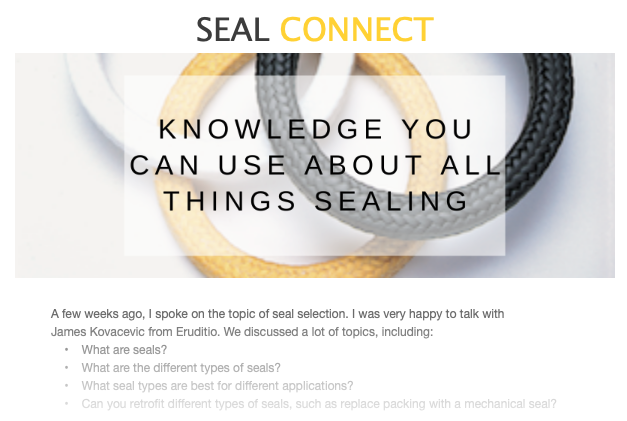Like many things, no shortcuts regarding reliable industrial packing performance can be taken. However, end users can expect reliability and longer life if they follow some basic guidelines.
Compression packing is a standard sealing device used to prevent product leakage. It helps extend the life of pumps, valves, and other rotating equipment. Today, braided packing is a good choice for many fluid sealing applications.
Following these guidelines will help extend the packing’s life and effectiveness. In addition, these will help ensure that the equipment meets the requirements for plant water use and effluent discharge.
The better the performance and reliability of a fluid sealing program, the better the condition of internal pump components. Adherence to the five best practices in this article allows plant teams to minimize excessive leakage caused by improper packing installations. They will reduce downtime as well.
Step 1 — Select the Base Fiber & Treatment
Braided packing must be chosen with an emphasis on the chemical and thermal properties of the fibers. Teams must consider these criteria during selection:
| Pumps | Valves |
| Operating temperature | Line’s maximum temperature |
| Pressure | Pressure |
| Shaft speed | Valve pH range |
| Pump pH range |
Reliability and maintenance teams must establish basic installation, equipment maintenance, and inspection guidelines with operational care practices.
Step 2 — Proper Industrial Packing Installation
Incorrect installation leads to problems with wear, heat increase, and excess leakage. Installers should remove all the used packing rings and the lantern ring once the selected packing is in hand. Before installation, they must thoroughly clean the stuffing box and thoroughly examine the equipment. For maximum performance, inspect the following:
- Stuffing box or stuffing box throat
- Shaft or sleeve
- Lantern rings
- Gland follower
The inspectors must document and correct any issues before repacking the pump. Ensuring that the equipment is in good repair helps extend the life and effectiveness of the newly installed packing and helps ensure that your equipment meets plant water use and effluent discharge requirements.
With proper conditions confirmed, installation can begin. Proper seating is critical because improper seating causes many problems.
Standard seating tools ensure proper packing seating. Installers should coat each new ring with lubricant or liquid soap. They must never use an anti-seize or metallic-based compound.
The lantern ring’s correct position within the packing rings provides adequate flushing. Inserting a small object through the flush port and feeling the lantern ring helps ensure the proper position.
Installation Tips
- Stagger the joints of each ring by 90 degrees: begin at twelve o’clock, three o’clock, six o’clock, and then nine o’clock.
- Install each ring individually, carefully seating each ring in the bottom of the stuffing box.
- Use a split bushing or a tamping tool—never a screwdriver or a sharp instrument.
- Seat the rings toward the bottom of the box to account for radial expansion.
Step 3 — Proper Industrial Packing Maintenance
Proper flushing, maintaining the industrial packing’s environment, and following the manufacturer’s recommendations are critical. Good flushing cools and cleans the stuffing box. The proper flush setup protects the packing, shaft, and stuffing box from excess heat, product buildup, friction, and wear. Flushing starts before opening the suction and discharging the valves to the pump to ensure it occurs as intended. Start the pump and allow the packing to leak freely at startup.
Step 4 — Make Changes as Operating Parameters Change
Process operating parameters may change from those used to specify the packing. As things change, the plant team should reevaluate the fiber and fiber treatment used to determine if any changes need to be made.
Changes that may affect the packing used include:
- Flow volume
- Hours of operation
- Operating temperature or pressure
- Pumped material
Step 5 — Monitor Gland Adjustment to Determine Replacement Timing
The team must replace the packing when the gland adjustment is exhausted or excess leaking occurs. During the break-in period, teams must make gradual adjustments, allowing 5 to 10 minutes between each adjustment. Taking special care during break-ins will result in longer industrial packing life.
After the break-in period, the leakage rate can be controlled to 10 to 12 drops per minute per inch of shaft sleeve diameter. When the gland can no longer be tightened, the adjustment is exhausted. The packing should be replaced because it will no longer seal effectively.
Industrial Packing Life up to 3 Years
A reliable packing expert or manufacturer will help plant managers, and reliability teams determine the ideal packing type for their application. A packing expert can help avoid improper seating and other installation issues, saving time and money.
Plant teams should consider partnering with a pump manufacturer and a local fluid sealing representative that understands the equipment service requirements. These experts can aid in simplifying the selection process and training employees on installation and basic care procedures and best practices.
Why are these procedures so necessary? Simple: History has shown that achieving an average packing life of up to three years is possible. Teams will be a few steps closer to this goal if they follow the guidelines and work with pump and packing manufacturers who can help with packing selection, installation, and team member training.
 SEAL CONNECT
SEAL CONNECT Find Your Sealing Solution
Find Your Sealing Solution